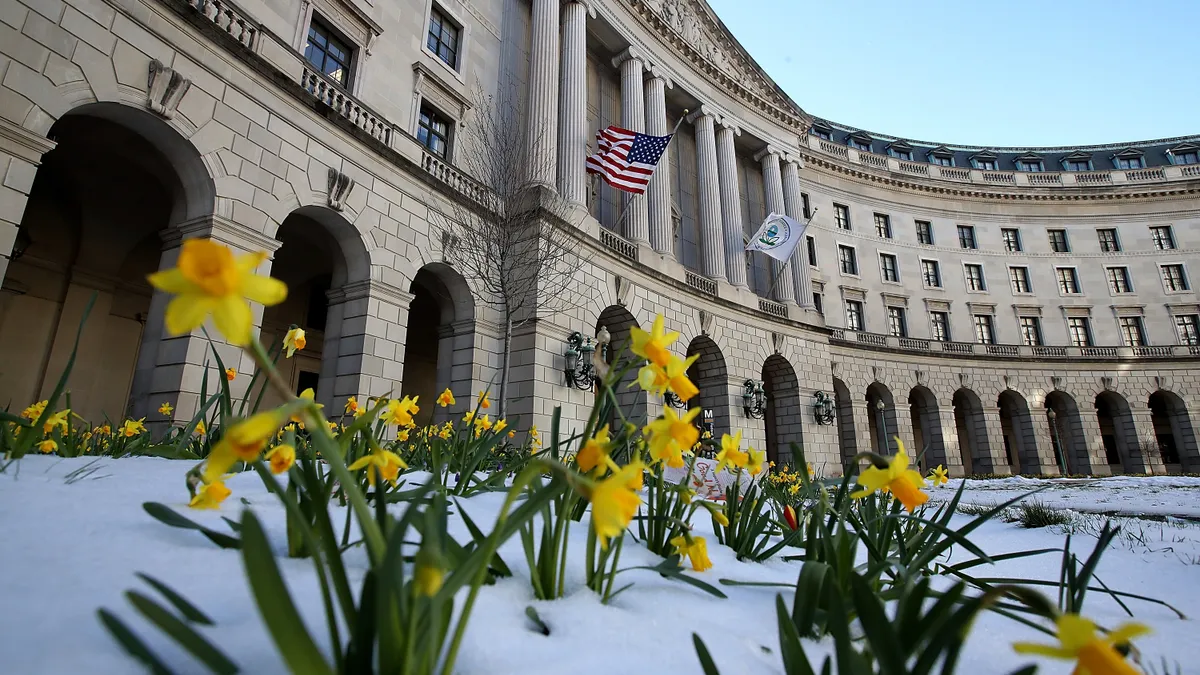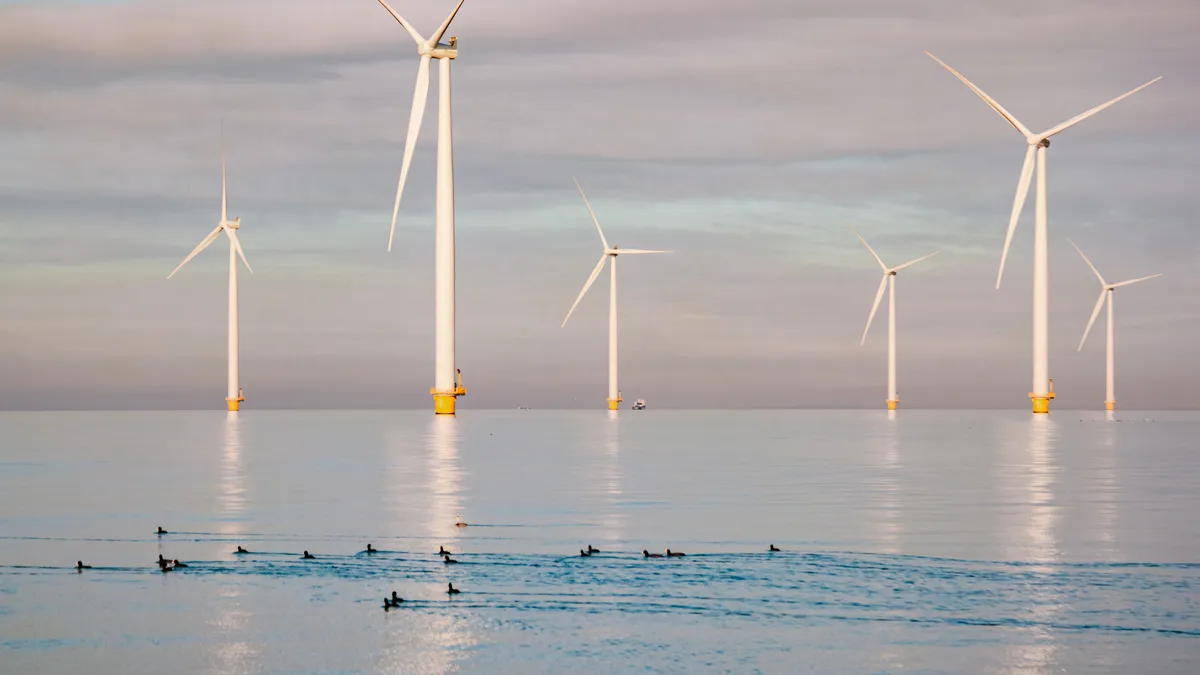The fate of the United States’ solar industry rests in President Trump’s hands. For many in the sector, that’s a scary thought.
Last week, the U.S. International Trade Commission voted 4-0 to find cause for severe injury to a pair of U.S. solar manufacturers, Suniva and SolarWorld. The months-long investigation will now proceed to a hearing for potential remedies set for Oct. 3, after which the ITC will make a formal recommendation to the president.
The finding is a result of a rare Section 201 investigation under the Trade Act of 1974 into whether the import of crystalline silicon photovoltaic modules unfairly disadvantaged domestic solar manufacturers. Suniva earlier this year petitioned the ITC to impose a tariff and floor price on these modules, with SolarWorld shortly joining after its German parent company filed for insolvency in May.
Both companies propose a tariff of $0.40/watt on imported solar cells and a floor price of $0.78/watt on imported modules. The president will make the final policy decision within two months of the ITC recommendation.
Solar interests were outraged by the petition, and the case bred odd bedfellows as it progressed through the investigation. Conservative think tanks like the American Legislative Exchange Council (ALEC) and the Heritage Foundation joined the Solar Energy Industries Association (SEIA) in condemning the proposal. Duke Energy, one of the largest utility holding companies, also sent a letter protesting the petition.
“This is a case about two companies bringing about a petition with almost the entire rest of the solar industry is in entire disagreement,” SEIA President Abigail Hopper told reporters during a press call after the ITC ruling. The decision "introduces great uncertainty into the process," she said.
The president's decision could cost the sector tens of thousands of jobs and put two-thirds of utility-scale solar projects at risk, the solar trade group warns. How Trump views the solar case remains unclear, but sector experts say he has a variety of options at his disposal, and the impacts could be especially significant for distributed solar companies more vulnerable to market signals.
Uncertainty starts
The first Section 201 trade case filed since the early 2000s, the SolarWorld-Suniva petition takes aim at a thriving part of the power sector. Utilities have ramped up investments in solar energy in recent years, and at the end of 2016 the U.S. had more than 40 GW of solar installed nationwide.
The trade case also fits neatly into President Trump’s promises to prioritize American jobs and tax reform ideals. Trump reportedly said at a small White House meeting “I want tariffs. And I want someone to bring me some tariffs.”
The ITC's ruling could give Trump his opportunity, and the decision immediately injected uncertainty into the sector. SEIA had already started campaigning for softer, non-tariff remedies in the hours following the vote.
"Tariffs are not an appropriate remedy,” Hopper said on the press call. “If prohibitive tariffs are placed, the [number of jobs in domestic manufacturing] will decrease, not increase.”
Suniva and SolarWorld are not SEIA members, but 600 manufacturing companies are part of the solar trade group. At least 26 submitted a letter of protest against the petition.
During a marathon 10-hour hearing in August, opponents pointed to poor business decisions and a crowded market as cause for the manufacturers' demise. Implementing tariffs would further distress U.S. solar manufacturing jobs, opponents said.
Without tariffs, GTM and SEIA forecast cumulative U.S. solar installations from 2018 to 2022 would be 72.5 GW. With a $0.78/watt minimum module price, that forecast falls to 36.4 GW. Add in the $0.40/watt cell tariff, and the forecast reaches only 25 GW over that time.
In all, the tariff proposals could cost the solar sector 88,000 jobs, SEIA estimates.
Tariff remedies are levied for up to four years, and can be extended to eight. But many barely make it past the two-year mark, according to Shayle Kann, senior vice president of research for GTM Research. Such a truncated timeline could prove a boon for the petition’s opponents.
Foreign manufacturers have hinted they have started exploring options to set up shop in the U.S. But a possible short implementation timeline will likely deter those companies from doing so, considering it could take as much as four years to get a facility operational — about as long as the tariffs could last, Kann noted.
SolarWorld and Suniva pushed back against SEIA's dire claims of job losses, pointing to a recent Mayer Brown economic analysis that said tariffs could, in fact, bring about 144,000 new jobs. Still, the bulk of solar modules used in U.S. projects are imported.
“90-95% [of solar modules] are imported,” said Morten Lund, partner and chair of the Stoel Rives Solar Energy Initiative. “That impact is spread pretty wide in terms of regionally, this will affect the whole country.” Some segments of the solar industry will fare better, such as utility-scale solar projects that are driven by renewables and climate mandates.
But others, such as the C&I and residential segments, are more vulnerable to market signals. Their precarious dependency on power prices could hurt their long-term financeability. Utility-scale solar in states without high power prices and renewable energy mandates are also susceptible.
“You know even a 10% increase could have a more tipping point impact in those states,” Lund said, pointing to Texas, the Midwest and the Southeast regions.
It would also damage the financeability of projects, said Michael Klaus, a partner at Hunton & Williams who focuses on tax equity for renewable energy.
“It creates uncertainty, especially for 2019 [solar] projects,” Klaus said. The power purchase agreements for such projects cannot factor in potential risks from tariffs or a floor price right now. This means a corporation or utility, for example, could sign a PPA but the project would never get off the ground or the lender is wary to lend to the developer.
But Klaus expects this challenge to stabilize somewhat once a solution is finalized.
“I think once the actual decision is known people will be able to build a structure around it.”
Possible remedies
Potential remedies available to President Trump are not confined to tariffs, according to sector experts. GTM’s Kann noted past cases where the ITC could choose placing a quota on imports or a combination of tariffs and imports.
“The form of the remedies has always been either a tariff or quota or a combination of those two,” Kann said.
Noticeably absent from those remedies, however, is a minimum floor price.
“That has never been implemented before," Kann said. "The more likely recommendation that [the ITC] would issue is probably closer to historical precedent ... but who knows what the exact the number will be.”
Lund and Elliott Williams, a Stoel Rives associate, took a different perspective. At first blush, they said, a minimum floor price is easier to implement and could ease potential disputes at the border.
“If it’s a floor price it’s easy to set and could be set apart from” the other tariffs already in place from previous trade cases, Williams said. The glut of cheap Chinese modules over the past six years compelled SolarWorld to file for relief from the Chinese and Taiwanese imports in 2014. The ITC granted the petition, filed under its anti-dumping duty measure. Chinese imports fell slightly (10% in 2016) as a result, but not enough to save the companies.
Adding tariffs on top of tariffs could complicate importers’ calculations and snarl implementation.
“Regardless of what the answer is the implementation will be complex,” Lund said.
Light at the end of the tunnel?
SEIA already plans to wage an aggressive lobbying campaign with the Trump administration to fend off any punishing tariff prices or other remedies.
Legal options are limited, SEIA's Hopper said. Any challenges to the ITC ruling would stem from procedural missteps, not the substance of the ruling itself. International trade partners could challenge it at the World Trade Organization. Still there is a small chance President Trump could choose to do nothing based on historical precedent.
In the past, GTM's Kann said, there have been 75 Section 201 cases. Of those, 34 were given to the president to decide. But only 19 of those cases came out with a sort of tariff or quota.
“It wouldn’t be uncommon to the president to do nothing,” he said.
But the Trump administration appears set on flexing its muscles to America's trade partners. And if successful, President Trump’s move to set tariffs will depart from the economic reform lined out by its conservative allies, such as the Heritage Foundation.
These arguments will continue to play out as both sides gear up to present their solutions on October 3.






















